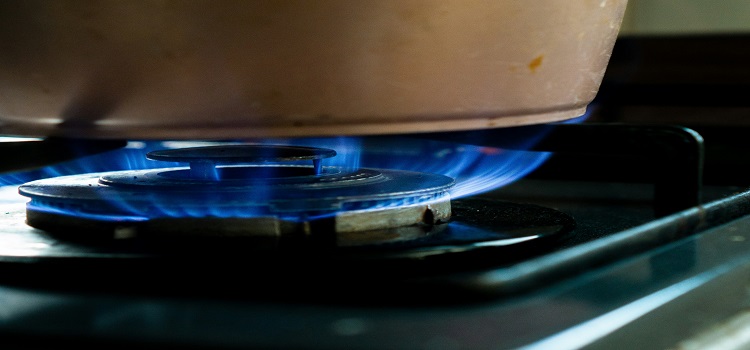As an Amazon Associate I earn from qualifying purchases.
What Size Gas Line for Stove: A Comprehensive Guide
Introduction: Selecting the appropriate size gas line for your stove is crucial to ensure safe and efficient operation. The size of the gas line directly affects the flow rate of gas to your stove, impacting its performance and reliability. In this guide, we’ll explore the factors to consider when determining the size of your gas line, the benefits of choosing the right size, how to calculate the correct size, and address common questions to help you make an informed decision.

Uses of Gas Stoves: Gas stoves are a staple in kitchens worldwide, offering convenient and precise cooking solutions for home chefs and professional cooks alike. From boiling and simmering to searing and baking, gas stoves provide versatile cooking capabilities and efficient heat distribution. Whether you’re preparing simple weeknight meals or gourmet feasts, a properly sized gas line ensures consistent performance and optimal cooking results.
Benefits of Choosing the Right Size Gas Line:
- Optimal Performance: A properly sized gas line ensures sufficient gas flow to the stove, allowing burners to ignite quickly and maintain a steady flame.
- Energy Efficiency: Correctly sized gas lines minimize pressure drops and gas wastage, resulting in more efficient fuel consumption and lower utility bills.
- Safety: Adequate gas flow prevents potential issues such as incomplete combustion, which can lead to carbon monoxide buildup or gas leaks.
- Longevity: Properly sized gas lines reduce strain on appliances, extending the lifespan of your stove and reducing the likelihood of maintenance issues.
How to Determine the Correct Size:
- Consult Local Codes: Check local building codes and regulations to determine the minimum size requirement for gas lines in your area.
- Calculate Gas Demand: Determine the total gas demand of your stove, considering the number of burners, BTU ratings, and any additional gas appliances connected to the same line.
- Consider Pipe Length and Material: Factor in the length of the gas line from the main supply to the stove, as well as the material of the pipe (e.g., steel, copper) and any fittings or bends that may affect flow rate.
- Use Sizing Charts or Formulas: Refer to sizing charts provided by gas line manufacturers or use sizing formulas recommended by industry standards (e.g., National Fuel Gas Code) to calculate the appropriate pipe diameter.
FAQs (Frequently Asked Questions):
- What size gas line do I need for a standard gas stove?
- The size of the gas line depends on factors such as the BTU rating of the stove, the length of the gas line, and local code requirements. Consult a professional or refer to sizing charts for accurate recommendations.
- Can I use a smaller gas line for my stove to save money?
- Using a smaller gas line than recommended can result in inadequate gas flow, leading to poor stove performance, safety hazards, and potential code violations. It’s essential to adhere to sizing guidelines for safety and efficiency.
- Do I need a dedicated gas line for my stove?
- While some homes may have a dedicated gas line for the stove, others may share a gas line with other appliances such as water heaters or furnaces. Consult a professional to assess your specific needs and ensure sufficient gas supply.
- Can I install a larger gas line than necessary for my stove?
- Installing a larger gas line than required may increase installation costs and could potentially lead to overpressurization issues. It’s best to follow sizing recommendations provided by professionals or industry standards.
- What are common reasons for inadequate gas flow to a stove?
- Common causes of inadequate gas flow include undersized gas lines, gas pressure issues, blockages or leaks in the line, and improperly adjusted regulators or valves.
- How often should I have my gas lines inspected?
- Gas lines should be inspected regularly by a qualified technician to ensure they are in good condition and free from leaks or corrosion. Consider scheduling annual maintenance checks as part of your home safety routine.
- Can I install a gas line for my stove myself?
- Gas line installation should be performed by licensed professionals with experience in handling gas piping to ensure compliance with safety regulations and prevent potential hazards.
- What is the difference between black iron and flexible gas lines?
- Black iron pipe is rigid and typically used for permanent installations, while flexible gas lines (e.g., CSST) offer more flexibility and ease of installation, making them suitable for retrofit projects or areas with limited access.
- Do gas lines need to be grounded?
- Grounding requirements for gas lines vary depending on local codes and the type of gas line material used. Consult a professional to determine if grounding is necessary for your installation.
- Can I use Teflon tape on gas line fittings?
- Teflon tape is not recommended for use on gas line fittings, as it can degrade over time and potentially cause leaks. Instead, use approved pipe joint compound or sealing tape specifically designed for gas lines.
Conclusion: Choosing the right size gas line for your stove is essential for ensuring safe and efficient operation. By considering factors such as gas demand, pipe length, and local code requirements, you can calculate the correct pipe diameter and ensure optimal performance of your stove. Addressing common questions and concerns through our FAQ section, you can make informed decisions and prioritize safety in your gas line installation. Remember to consult with licensed professionals for guidance and assistance to ensure compliance with regulations and prevent potential hazards.
As an Amazon Associate I earn from qualifying purchases.
Leave a Reply